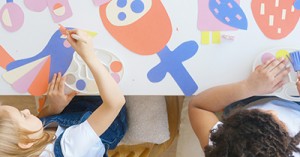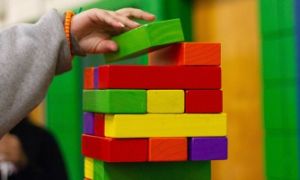Here's a quick cheat sheet for Quality Area 4: Staffing Arrangements under the National Quality Standard (NQS) in Australian early childhood education. This area focuses on ensuring that staffing promotes children's learning and development.
Key Standards
| Standard | Description |
|---|---|
| 4.1 | Staffing arrangements enhance children's learning and development. |
| 4.2 | Management, educators, and staff work in collaboration to support children’s well-being. |
Element Breakdown
Standard 4.1 – Staffing Arrangements
- 4.1.1 Organisation of educators: Ensures continuity of care and supervision.
- 4.1.2 Continuity of staff: Promotes stable relationships with children.
Standard 4.2 – Professionalism
- 4.2.1 Professional collaboration: Staff work respectfully and collaboratively.
- 4.2.2 Professional standards: Staff uphold ethical and professional standards.
Practical Examples
Examples for Standard 4.1 – Staffing Arrangements
4.1.1 Organisation of Educators
- Example: Educators are assigned to specific rooms and age groups to ensure familiarity and continuity.
- Example: A daily staffing schedule is displayed and followed to maintain consistent supervision.
- Example: Relief educators are briefed thoroughly before starting to ensure smooth transitions.
4.1.2 Continuity of Staff
- Example: Children are greeted by familiar staff each morning, helping reduce separation anxiety.
- Example: The same educators are present during key routines like meals and rest time.
- Example: Staff turnover is minimized through supportive leadership and professional development.
Examples for Standard 4.2 – Professionalism
4.2.1 Professional Collaboration
- Example: Educators hold weekly team meetings to discuss programming and child development.
- Example: Staff use shared digital platforms to communicate observations and updates.
- Example: Educators mentor new staff and students on placement, fostering a learning culture.
4.2.2 Professional Standards
- Example: Staff follow the Early Childhood Australia Code of Ethics and reflect on ethical dilemmas.
- Example: Educators maintain confidentiality and professionalism when speaking with families.
- Example: Staff engage in regular training on child protection, inclusion, and cultural competence.
Evidence & Practice Tips
- Maintain consistent educator rosters to support relationship-building.
- Encourage team meetings and reflective practice sessions.
- Display staff qualifications and roles clearly.
- Use mentoring and peer support to build professional capacity.
- Ensure staff adhere to the Early Childhood Australia Code of Ethics.
Quick Reminders
- Ratios and qualifications must meet regulatory requirements.
- Staff should model respectful communication and teamwork.
- Professional development is key—track and support it.
Further Reading
How To Achieve Quality Area 4
Reflection Questions For Quality Area 4
Exceeding Guidance For Quality Area 4
Documentation Services Require To Support Quality Area 4
Key Terms From Quality Area 4







 Here is the list of the EYLF Learning Outcomes that you can use as a guide or reference for your documentation and planning. The EYLF
Here is the list of the EYLF Learning Outcomes that you can use as a guide or reference for your documentation and planning. The EYLF The EYLF is a guide which consists of Principles, Practices and 5 main Learning Outcomes along with each of their sub outcomes, based on identity,
The EYLF is a guide which consists of Principles, Practices and 5 main Learning Outcomes along with each of their sub outcomes, based on identity, This is a guide on How to Write a Learning Story. It provides information on What Is A Learning Story, Writing A Learning Story, Sample
This is a guide on How to Write a Learning Story. It provides information on What Is A Learning Story, Writing A Learning Story, Sample One of the most important types of documentation methods that educators needs to be familiar with are “observations”. Observations are crucial for all early childhood
One of the most important types of documentation methods that educators needs to be familiar with are “observations”. Observations are crucial for all early childhood To support children achieve learning outcomes from the EYLF Framework, the following list gives educators examples of how to promote children's learning in each individual
To support children achieve learning outcomes from the EYLF Framework, the following list gives educators examples of how to promote children's learning in each individual Reflective practice is learning from everyday situations and issues and concerns that arise which form part of our daily routine while working in an early
Reflective practice is learning from everyday situations and issues and concerns that arise which form part of our daily routine while working in an early Within Australia, Programming and Planning is reflected and supported by the Early Years Learning Framework. Educators within early childhood settings, use the EYLF to guide
Within Australia, Programming and Planning is reflected and supported by the Early Years Learning Framework. Educators within early childhood settings, use the EYLF to guide When observing children, it's important that we use a range of different observation methods from running records, learning stories to photographs and work samples. Using
When observing children, it's important that we use a range of different observation methods from running records, learning stories to photographs and work samples. Using This is a guide for educators on what to observe under each sub learning outcome from the EYLF Framework, when a child is engaged in
This is a guide for educators on what to observe under each sub learning outcome from the EYLF Framework, when a child is engaged in The Early Years Learning Framework describes the curriculum as “all the interactions, experiences, activities, routines and events, planned and unplanned, that occur in an environment
The Early Years Learning Framework describes the curriculum as “all the interactions, experiences, activities, routines and events, planned and unplanned, that occur in an environment


